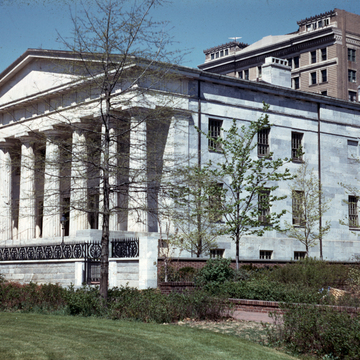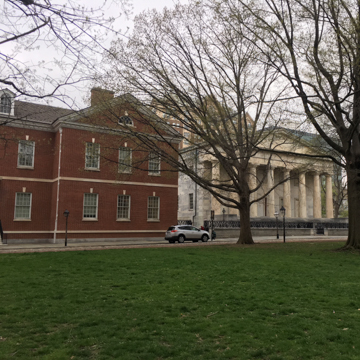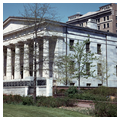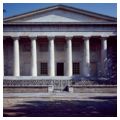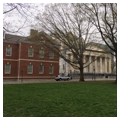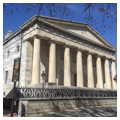Strickland's seemingly unimaginative adaptation of the Parthenon for the Second Bank of the United States was actually a sophisticated fusion of Roman vaulting and siting with a facade based on the Parthenon from Stuart and Revett's Antiquities of Athens (1762) but raised on a Roman base. Such eclectic fusion of cultural forms became one of the devices by which Americans pronounced the nature of their civilization. Intended to be seen only from the Chestnut Street front or from the Library Street Place rear, the bank sorely misses the adjacent buildings that shielded the unornamented sides. The great central banking room, with its barrel vault carried on columns across the central axis and lighted by stylized Palladian windows at each end, is one of the premier spaces of the American Classical Revival.
As the center of the American monetary and banking system, this building gave Philadelphians control of the nation's economy until Andrew Jackson made its dissolution a campaign plank. In 1836, in a memorable battle with the bank's president Nicholas Biddle, Jackson rescinded the bank's charter and instead created federal banks in each of the great commercial metropoli of the nation. The Second Bank now houses the National Portrait gallery of the Revolutionary heroes; many are by Charles Willson Peale and were purchased by the city in 1854—an atypically farsighted act—when the Peale Museum was disbanded.


